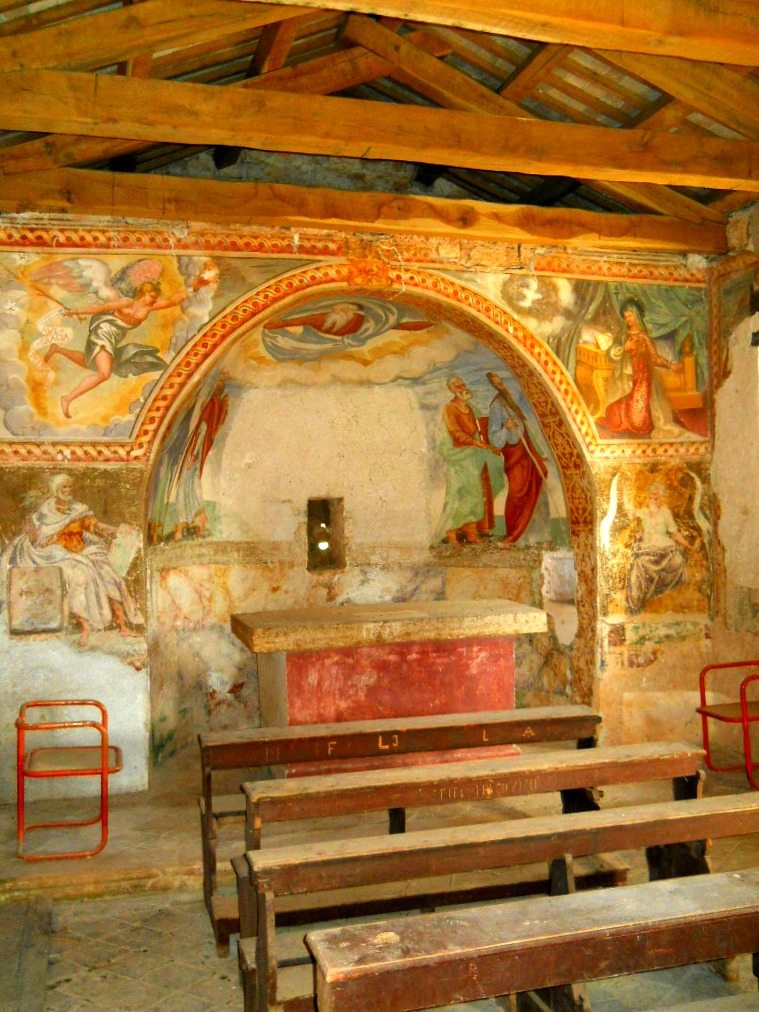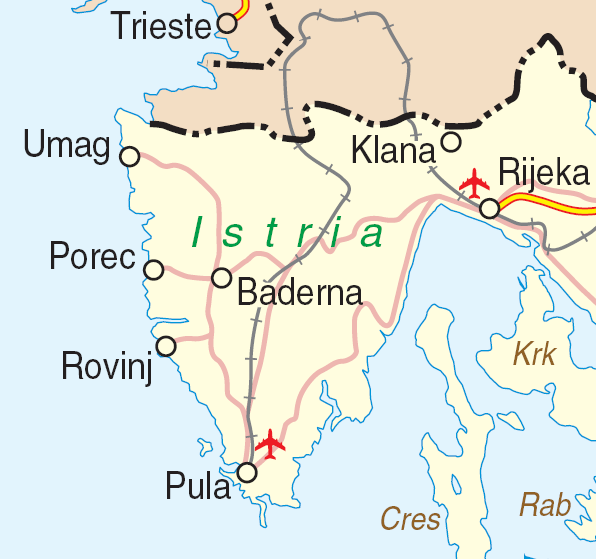|
Višnjan
Višnjan ( it, Visignano) is a village and municipality in Istria, Croatia. Višnjan is the site of Višnjan Observatory (an astronomical observatory). The observatory is home of several long-running international summer programs for youth in astronomy, archeology, marine biology and other disciplines. Geography Višnjan is located 12 kilometers east of Poreč and 3 kilometers west of Pula-Koper road. Višnjan is located on elevation of 244m and average municipality elevation is between 200-300m. One of the most notable sinkholes in Istria, Baredina, is located in the municipality. Demographics According to the 2001 census Višnjan had a population of 625 with a total municipal population of 2187 of which 71.7% were Croats, 9.1% were Italians and 6.2% declared themselves as Istrians. Like most settlements in Istrian interior Višnjan is experiencing depopulation in the last decades as people are migrating towards the coast. According to the 1921 census the majority of the popul ... [...More Info...] [...Related Items...] OR: [Wikipedia] [Google] [Baidu] |
Višnjan Observatory
Višnjan Observatory ( hr, Zvjezdarnica Višnjan; obs. code: 120) is an astronomical observatory located near the village of Višnjan in Croatia. It is headed by Korado Korlević, a prolific astronomer and discoverer of minor planets. In 2009, the Višnjan observatory moved to Tičan (at ) and received the obs. code L01 on 5 October 2017 (). Description Višnjan Observatory was founded in 1992, as a public observatory. It worked in the field of astrometry and search of a new asteroids. Increasing light pollution made the observations in Višnjan difficult, and they stopped in 2001. In 2009, a new building of the observatory was opened near the village of Tičan, approximately 2.5 kilometers away. According to the statistic on observatory's website (Višnjan and Tičan) as of 2016, a total of 1420 asteroids and 2 comets have been discovered at the observatory, which uses 11 telescopes and has a staff of 78 members and volunteers. The Minor Planet Center (MPC) directly credit ... [...More Info...] [...Related Items...] OR: [Wikipedia] [Google] [Baidu] |
Anžići
Anžići (Italian: ') is a village in Croatia located in Istria, in the municipality of Višnjan, in Istria County Istria County (; hr, Istarska županija; it, Regione istriana, "Istrian Region") is the westernmost county of Croatia which includes the biggest part of the Istrian peninsula ( out of , or 89%). Administrative centers in the county are Paz .... In 2001, the village had 44 inhabitants.... Demographics See also * Antonci, Poreč Notes and references {{DEFAULTSORT:Anzici Populated places in Istria County ... [...More Info...] [...Related Items...] OR: [Wikipedia] [Google] [Baidu] |
Istria
Istria ( ; Croatian and Slovene: ; ist, Eîstria; Istro-Romanian, Italian and Venetian: ; formerly in Latin and in Ancient Greek) is the largest peninsula within the Adriatic Sea. The peninsula is located at the head of the Adriatic between the Gulf of Trieste and the Kvarner Gulf. It is shared by three countries: Croatia, Slovenia, and Italy.Marcel Cornis-Pope, John Neubauer''History of the literary cultures of East-Central Europe: junctures and disjunctures in the 19th And 20th Centuries'' John Benjamins Publishing Co. (2006), Alan John Day, Roger East, Richard Thomas''A political and economic dictionary of Eastern Europe'' Routledge, 1sr ed. (2002), Croatia encapsulates most of the Istrian peninsula with its Istria County. Geography The geographical features of Istria include the Učka/Monte Maggiore mountain range, which is the highest portion of the Ćićarija/Cicceria mountain range; the rivers Dragonja/Dragogna, Mirna/Quieto, Pazinčica, and Raša; and t ... [...More Info...] [...Related Items...] OR: [Wikipedia] [Google] [Baidu] |
Istria County
Istria County (; hr, Istarska županija; it, Regione istriana, "Istrian Region") is the westernmost county of Croatia which includes the biggest part of the Istrian peninsula ( out of , or 89%). Administrative centers in the county are Pazin, Pula and Poreč. Istria County is the most prominent Italian-speaking part of Croatia. History The caves near Pula (in latinium ''Pietas Julia''), ''Lim fjord'', ''Šandalja'', and ''Roumald's cave'', house Stone Age archaeological remains. Less ancient Stone Age sites, from the period between 6000 and 2000 BC can also be found in the area. More than 400 locations are classified as Bronze Age (1800–1000 BC) items. Numerous findings including weapons, tools, and jewelry) which are from the earlier iron era around the beginning of common era. The Istrian peninsula was known to Romans as the ''terra magica''. Its name is derived from the Histri, an Illyrian tribe who as accounted by the geographer Strabo lived in the region. R ... [...More Info...] [...Related Items...] OR: [Wikipedia] [Google] [Baidu] |
Istria County
Istria County (; hr, Istarska županija; it, Regione istriana, "Istrian Region") is the westernmost county of Croatia which includes the biggest part of the Istrian peninsula ( out of , or 89%). Administrative centers in the county are Pazin, Pula and Poreč. Istria County is the most prominent Italian-speaking part of Croatia. History The caves near Pula (in latinium ''Pietas Julia''), ''Lim fjord'', ''Šandalja'', and ''Roumald's cave'', house Stone Age archaeological remains. Less ancient Stone Age sites, from the period between 6000 and 2000 BC can also be found in the area. More than 400 locations are classified as Bronze Age (1800–1000 BC) items. Numerous findings including weapons, tools, and jewelry) which are from the earlier iron era around the beginning of common era. The Istrian peninsula was known to Romans as the ''terra magica''. Its name is derived from the Histri, an Illyrian tribe who as accounted by the geographer Strabo lived in the region. R ... [...More Info...] [...Related Items...] OR: [Wikipedia] [Google] [Baidu] |

